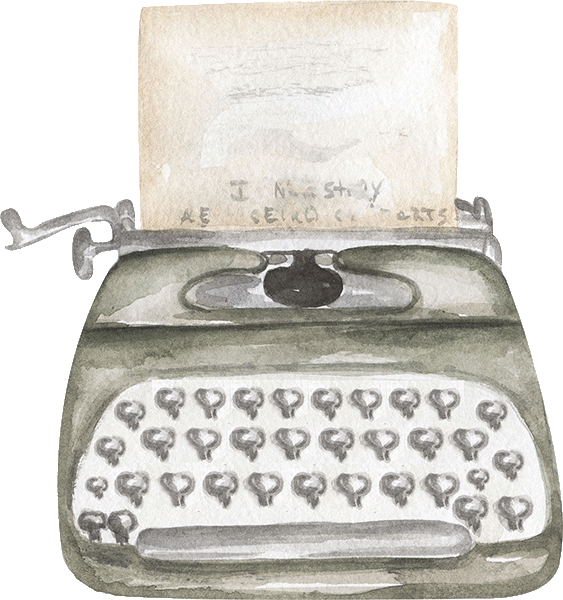
I know, I know! A Step-by-Step Guide to Publishing with Createspace for Intelligent People (Part 2) was supposed to be posted today. But … too lazy and too enthused about this new idea (which, disclaimer, I got from the book Writing With Power by Peter Elbow. I’ve only read the first chapter, but I’m smart enough to draw a whole blog post from it. *nods*)!
Today we’re going to be talking about feeling and thinking in writing.
Both of these are extremely important. By forgetting one or the other we either write something full of craziness or full of stiffness. By combining them, the novel never gets written.
The only way is to do first one, then the other, then a balance (that sounds confusing since I just said you can’t combine them, but bear with me!), then publish. I’ll explain more on each of these steps (or, rather, each of these drafts). I made up the system, but the general idea comes from Peter Elbow’s book.
Some of you may be thinking right now, “Crazy is a good thing!” Well, it is! It really is. In the first draft. After that, though you want to write something original and meaningful of course, you need to tug back on the reins. You’re past the finish line; time to groom your horse.
Okay, that was a weird metaphor that didn’t necessarily make sense, but you get the point.
Here’s my system:
First drafts are for crazy (feeling – just writing).
Second drafts are for organization (thinking – revising).
Third drafts are for polishing (editing).
Final drafts are for perfection (review then publish).
(A quick note: that’s not from Writing with Power, so you can ignore that advice if you do so choose, as it was just made up by me. However …
There were sixteen drafts of The Dressmaker’s Secret.
There were four of The Lady of the Vineyard.
So I’ve sorta-kinda experimented and found out that it works? I know TLOTV isn’t perfect, but it’s tamed. 🙂 I didn’t do it all myself (I had quite a few wonderful beta-readers), but what I did do, I did using this system … and in the end, writing is a pretty solitary activity. And if you still think I have no right to writing this post … go away. I don’t need that kind of negativity. 😛 )
Feeling (the first draft):
The rush of inspiration, of insanity, of great ideas that comes with the first draft (or should – try a different idea if it doesn’t, at least in the first page if not throughout most of the writing).
In the first draft, don’t hold back! Let go and write everything that comes to your mind. Every crazy scene, every ridiculous thought, every monstrous sentence. Don’t curtail yourself in any way, shape, or form.
That’s easy for you to say, you mumble. You don’t have stupid ideas like I do!
That’s where you’re wrong! There was this crazy scene in TLOTV that was originally just plain awful. It was this random nonsense about Adele swinging from a rope that she was afraid to cut and if she cut it she was afraid she’d fall and not having anything to land on and … it was just bad. Really bad.
Obviously I thought it was a great, inspired thought at the time, but later … it just didn’t make sense.
However, if I had of worried and fussed over expressing that idea for a hundred years, the novel might not have been finished! You see what I mean? You can’t think about the first draft. NOT EVER!!! The moment you stop feeling and start thinking, you’ve thrown yourself off balance, and there you are swaying on the tightrope … and here I am making up yet another bad metaphor like that one in TLOTV.
I’m gonna leave that one in. I’m sorry, but it has meaning, doesn’t it? Doesn’t it?! 😛
Anyway, that’s your feeling.
Thinking (the second draft):
So, you’ve finished draft one … and set it aside for a while (you have to let those feeling emotions die down!) … and there it is. A mess of crazy ideas.
So throw away feeling (COMPLETELY!). It’s time for thinking to rule the road.
Thinking is for structure. Thinking is for common sense. Thinking is for ideas that need to be either developed or gotten rid of.
Yes, thinking is kind of another way of saying ‘revising.’ However, I count thinking (or revising) not as a early form of editing, but as the second step of writing.
It’s vastly important, because face it. First drafts are a mess of good ideas, bad ideas, good sentences, bad sentences, good characters, bad characters … it’s all thrown together and you need something to root out the bad and make room for the good.
That’s your thinking.
Conquering the First and Second Drafts:
You may say, “I’m all thinking!” or “I’m all feeling!” How can you let go of your prominent writing-strength and do what you need to do to create a good book?
I would say will-power, but that’s not it, really. For feeling, you need to write so fast that you don’t even have time to think. For thinking, you need to revise so slow that you don’t even have time to feel. Does that make sense? If it doesn’t – willpower. XD
Polishing (feeling and thinking – the third draft):
I know that sounds crazy … I just told you that feeling and thinking have to be completely different things for the writing to work, and now I’m telling you to do both at once.
Well, this is the editing draft. You’ve got your plot-holes smoothed over, your bad ideas crushed, and your good ideas made better. You’ve added thought to the feeling. So what do you do?
First, read it through and make sure you don’t need to think some more. After that’s done, you do the true editing. Make sure you plot is smooth and well-rounded. Check up on your characters – are they truly the best? Is your world-building all right? How’s the setting looking? Do you need to add or subtract some description here and there? Then get rid of bad grammar and spelling, awkward sentences, and the like.
Perfection (final draft):
I don’t mean perfection exactly, I suppose. But you know what? It’s never gonna be quite perfect because you’re always gonna be growing as a writer. So just make it as good as you possibly can. (You could also hire a professional editor, and you’ll want to at least get opinions and help from several different people. A second pair of eyes is always a good idea.)
Well, that’s all I have for today, guys! Feel free to comment questions and thoughts if you have any. 🙂
~Kellyn Roth


18 Responses
I just emailed you I hope you read and respond to it!
Thanks! I just saw it, but I’m gonna wait until I get to the other computer where I store all my files and everything until I respond. 🙂
Ok Awesome! Do you send out paperback arc copies was NY main question!
I don’t usually because I’m (kind of) in debt at the moment (I owe money to my parents … we bought a puppy and I have to help pay for it).
Ah ok I was really interested to getting ARCs of your book!
So you can’t send me one?
No, I can’t. I can offer you a book in MOBI, EPUB, or PDF format, but I understand if you can’t accept ebooks.
I don’t accept those…. Sorry… Goodluck!
Awesome post! This was SO helpful!
I’m glad! I really wanted to write it! 😀
Cool post!
But I would really like to argue that writing is 10000% not a solitary activity… I can write a blog post about that XD
Well, of course you want people to read your book, perhaps edit it for you, etc. And you want someone to bounce ideas off, etc. In fact, that’s my main way to get over writer’s block – talking to friends about my novels. But I don’t write with people leaning over my shoulder watching me … so yeah. I suppose it varies from person to person.
You were just referring to the drafting process?
Yes. The actual writing. And, you know, it is your book … although it’s great to take the ADVICE of other people, I don’t think you should let it become anyone’s book but your own. But that’s just my opinion … I know that most people probably feel differently. 🙂